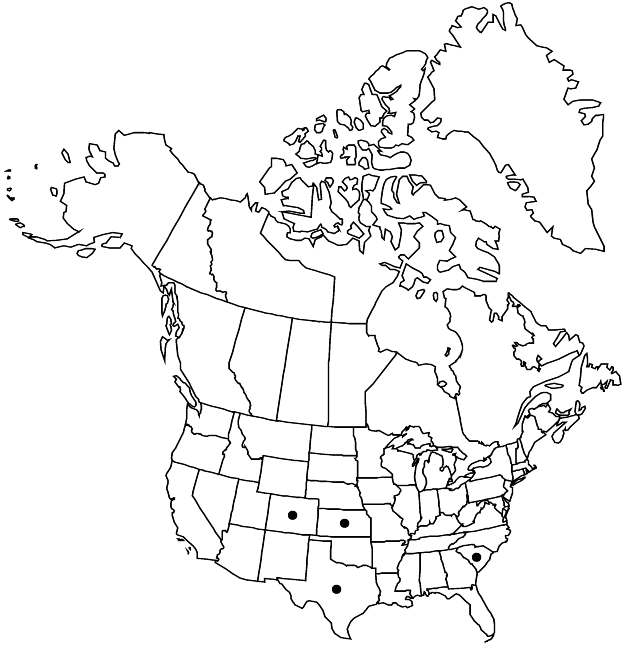Crassula drummondii
Just’s Bot. Jahresber. 31(1): 829. 1904,.
Plants terrestrial or subaquatic, annual. Stems decumbent or erect, greenish red in age, diffusely branched, to 10 cm. Leaf blades narrow-lanceolate, 1.5–3 mm, apex obtuse. Inflorescences lax; flowers 1 per node. Pedicels 0.5–3 mm. Flowers 4-merous; sepals triangular-ovate, 0.4–0.6 mm, apex obtuse; petals ovate, 1.3–1.5 mm. Follicles ascending, 9–15-seeded, oblong; old follicles spreading, flat. Seeds oblong to ellipsoid, 0.2–0.4(–0.5) × 0.1–0.3 mm, prickly-papillate, dull, smooth.
Phenology: Flowering spring.
Habitat: Terrestrial or subaquatic, margins of ponds and streams
Elevation: 0-50 m
Distribution

Colo., Kans., S.C., Tex., South America.
Discussion
M. Bywater and G. E. Wickens (1984) cited Crassula drummondii also from Arizona; I have referred their specimen (Spring Valley, near Sitgreave Mountain, Lemmon in 1884) to C. viridis (R. V. Moran 1992b).
Selected References
None.